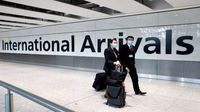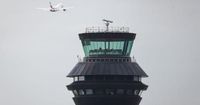Heathrow Airport was thrust into chaos on March 21, 2025, as a fire at a nearby electrical substation forced the UK’s busiest airport to shut down completely for a full day, affecting nearly 300,000 passengers and disrupting flight schedules worldwide. This incident has raised alarms about the stability of critical infrastructure in the face of emergencies.
The shutdown followed a significant fire at the North Hyde electrical substation, located just north of the airport. The London Fire Brigade dispatched ten fire engines and over 70 firefighters, who spent hours battling the blaze. Authorities reported that as a precaution, power was cut to Heathrow, resulting in a power outage across the airport. As a representative from the airport stated, "To maintain the safety of our passengers and colleagues, we have no choice but to close Heathrow until 23:59 on March 21, 2025."
Aviation analytics firm Cirium highlighted the magnitude of the disruption, reporting that Heathrow was scheduled to handle more than 1,330 flights on that fateful day, carrying around 291,000 passengers. However, with the airport’s closure, British Airways, which operates over 51% of flights from Heathrow, quickly moved to inform passengers not to come to the airport. The airline announced, "Due to a power outage in the London Heathrow area, London Heathrow Airport is currently closed," emphasizing their commitment to keeping passengers updated.
As the crisis unfolded, travelers felt the immediate impact of cancelled flights. Around 120 aircraft were in the air when the closure order was issued. Many flights were diverted to alternative airports, including Gatwick, Charles de Gaulle in Paris, and Shannon Airport in Ireland. Airport officials confirmed that seven flights were accepted at Gatwick from cities such as Singapore and Johannesburg, while others were turned around to return to their points of origin in North America and Canada.
Heathrow's closure not only impacted incoming flights but created a ripple effect throughout global aviation networks. Eurostar, the high-speed train service, stepped up to the plate, announcing two additional trains to accommodate stranded travelers heading for London. Meanwhile, Ryanair offered a swift response with eight ‘rescue flights’ between Stansted and Dublin to help passengers displaced by the airport's closure.
As the day unfolded, questions began to arise regarding the preparedness of Heathrow's infrastructure in the wake of the fire. John Strickland, an aviation consultant, drew comparisons between the chaotic scenes at Heathrow and the significant disruptions caused by events such as the 2010 Icelandic volcano eruption and 9/11, stating, "We’re talking about several days’ worth of disruption to get the planes recovered and start using them again to move planned and disrupted passengers." His worries echoed throughout the travel industry as many speculated about the adequacy of contingency plans in place.
Airlines took action quickly, with EasyJet opting to deploy larger aircraft to accommodate more passengers on select routes over the weekend. Passengers impacted by the closure were advised to communicate with their respective airlines, with many airlines experiencing an influx of inquiries. British Airways chief executive Sean Doyle expressed the company's commitment to work through the backlog, stating in a video message, "we hope that power will be restored as soon as possible. But even when that does happen, this incident will have a substantial impact on our airline and customers for many days to come, with disruption to journeys expected over the coming days."
Compounding the travel nightmare was the issue of inflated accommodation rates for travelers stranded in the vicinity of Heathrow. Hotel prices surged, with some establishments reportedly raising booking costs exponentially in response to increased demand during the turmoil. Tim Hentschel, CEO of booking platform HotelPlanner.com, noted that hotels often capitalize on such crises, leading to accusations of price gouging.
As the day concluded, the first flights began resuming as the power outage was gradually rectified. A British Airways plane landed just before sunset, marking a critical step toward returning to normal operations. However, even as services resumed, major disruptions loomed on the horizon with expectations that the backlog would take several days to resolve fully.
Heathrow's management faced criticism regarding the vulnerability of their infrastructure. Following the incident, Prime Minister Keir Starmer called for a rigorous investigation, emphasizing that serious questions needed to be asked about how a fire could result in such massive operational failure at a critical national hub. Industry experts agreed, with calls for improvements to safety protocols and robust contingency measures that could withstand unforeseen disasters.
Overall, March 21, 2025, will serve as a stark reminder of the importance of critical infrastructure resilience. The incident prompted urgent discussions on capacity, disaster preparedness, and industry responsibility as airlines, travelers, and policymakers navigate the tumultuous aftermath of this unprecedented event. With a vigilant eye on future risks, stakeholders across the aviation sector prepare for the challenge of restoring normalcy in the coming days.




